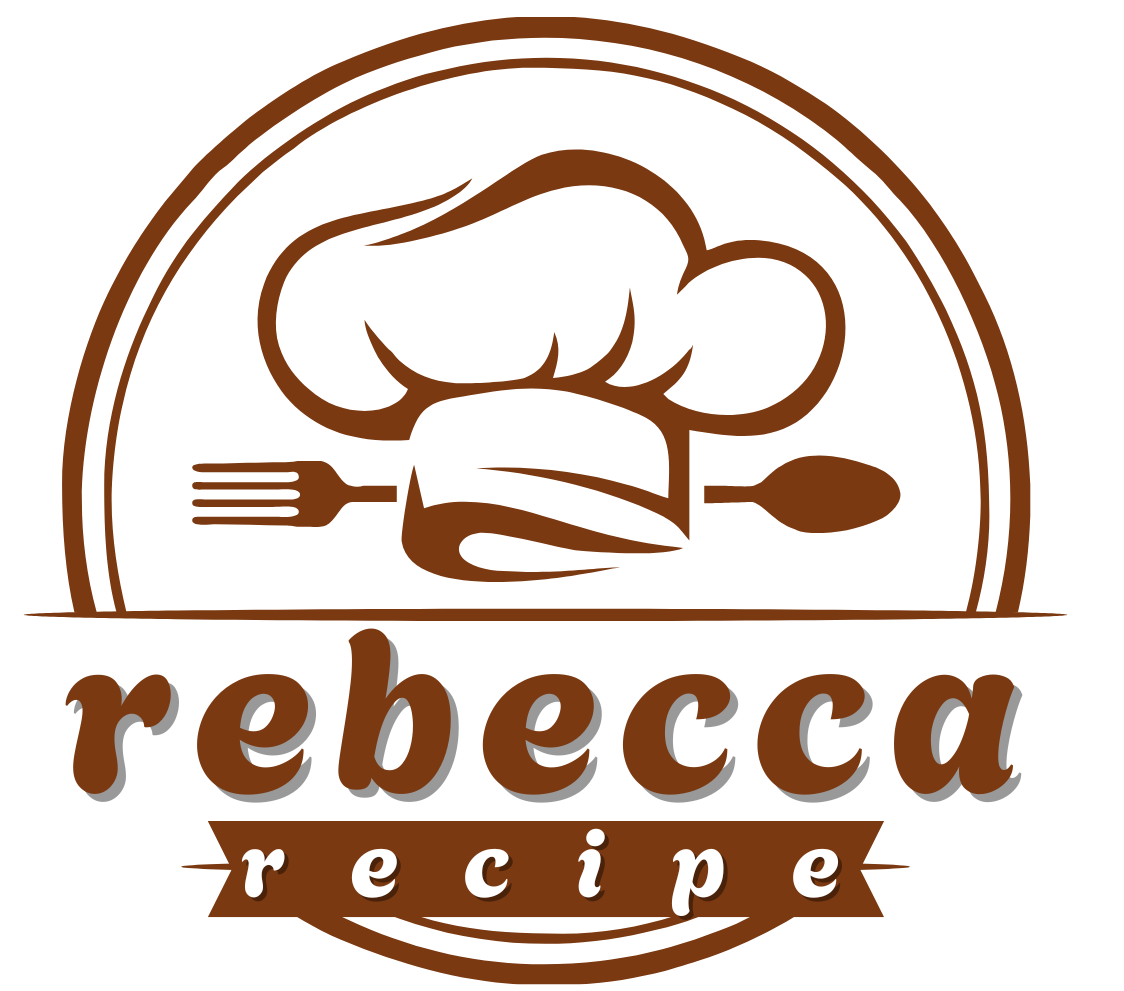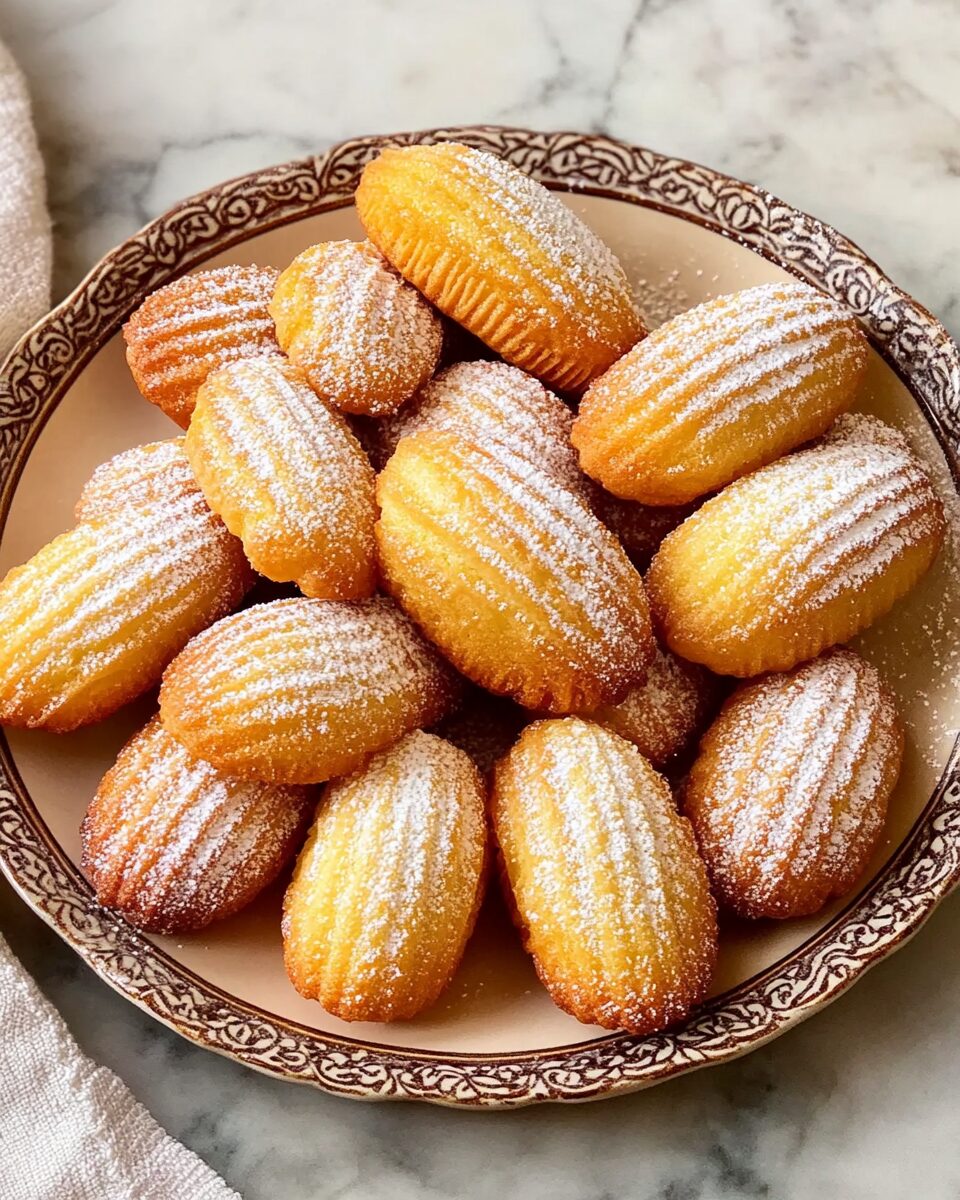These delightful French butter cakes—known as madeleines—are soft, shell-shaped sponge cakes with a buttery, lemony flavor. Perfect with tea or coffee.
Full Recipe:
Ingredients
- 2 eggs
- 1/2 cup white sugar
- 1 cup all-purpose flour
- 2 tablespoons lemon zest
- 1/2 cup butter, melted and cooled
- 1/2 teaspoon vanilla extract
- 1/4 teaspoon salt
- 1/2 teaspoon baking powder
Directions
-
Preheat oven to 375°F (190°C). Grease and flour madeleine molds.
-
In a bowl, beat eggs and sugar until light and fluffy.
-
Add lemon zest and vanilla extract.
-
In a separate bowl, sift together flour, baking powder, and salt.
-
Gently fold dry ingredients into the egg mixture.
-
Fold in the melted butter until incorporated.
-
Spoon batter into molds, filling each about 3/4 full.
-
Bake 10–12 minutes or until edges are golden brown and cakes spring back when touched.
-
Cool slightly before removing from molds. Serve warm or at room temperature.
Nutrients
- Calories: 150
- Total Fat: 8g
- Saturated Fat: 5g
- Cholesterol: 45mg
- Sodium: 70mg
- Total Carbohydrates: 17g
- Dietary Fiber: 0.3g
- Sugars: 10g
- Protein: 2g
- Calcium: 10mg
- Iron: 0.5mg
History and Origin of Madeleines
French Butter Cakes, or Madeleines, are iconic shell-shaped sponge cakes that have delighted pastry lovers for centuries. These small, delicate cakes originated in France and have become a symbol of refined French pâtisserie. The origin story of Madeleines dates back to the 18th century in the Lorraine region of northeastern France. It is believed that a young servant named Madeleine Paulmier prepared these cakes for Stanisław Leszczyński, the Duke of Lorraine and former King of Poland. Impressed by their unique taste and texture, he named them after her and introduced them to the French court. Since then, Madeleines have become a staple in French baking and are celebrated for their simplicity, elegance, and timeless charm.
Cultural Significance in France
Madeleines hold a special place in French culture and tradition. They are not just a sweet treat but a nostalgic symbol, especially for those who grew up in France. One of the most famous literary references to Madeleines appears in Marcel Proust’s seminal work In Search of Lost Time (À la recherche du temps perdu). In the novel, the narrator dips a Madeleine into tea, triggering a wave of childhood memories—an iconic moment that has become a metaphor for involuntary memory. This deep cultural resonance gives Madeleines a sentimental value that extends beyond their culinary appeal.
Distinctive Features and Texture
Madeleines are known for their distinctive shell-like shape, achieved using special pans with shell-shaped molds. This shape is both aesthetically pleasing and functional, offering a crisp, lightly browned edge with a soft, tender interior. The texture is somewhere between a cake and a cookie—spongy, buttery, and slightly crisp at the edges. A traditional Madeleine has a delicate crumb, enhanced by the generous use of butter and often flavored with lemon zest or vanilla. The hump that forms on the back of the cake during baking is considered a mark of a well-made Madeleine, indicating proper technique and temperature control.
Flavor Variations and Modern Twists
While the classic Madeleine is flavored with lemon zest and vanilla, modern bakers have experimented with a variety of ingredients to put unique spins on the traditional recipe. Some popular variations include:
-
Chocolate-dipped Madeleines
-
Matcha (green tea) flavored Madeleines
-
Almond or hazelnut flour for nutty depth
-
Orange blossom or rose water for floral notes
-
Spiced versions with cinnamon or cardamom
-
Filled Madeleines with fruit preserves or Nutella
These innovations allow bakers to personalize Madeleines and tailor them to different tastes or occasions. Despite these modern twists, the integrity of the original recipe is usually maintained—ensuring that Madeleines remain a recognizable and cherished treat.
Perfect Pairings and Serving Suggestions
Madeleines are incredibly versatile when it comes to serving options. They pair beautifully with a variety of beverages, making them ideal for afternoon tea, coffee breaks, or elegant brunches. Common pairings include:
-
Tea: Earl Grey, chamomile, or green tea balance the buttery richness.
-
Coffee: Espresso or cappuccino enhances the cake’s subtle sweetness.
-
Hot chocolate: Perfect for colder seasons, especially when the Madeleines are warm.
-
Dessert wine or champagne: Ideal for upscale gatherings or celebrations.
They can be served warm straight from the oven or at room temperature. Dusting them with powdered sugar or glazing with lemon icing adds visual appeal and extra flavor.
Baking Tips and Techniques
Though the recipe for Madeleines is relatively simple, achieving perfect results requires attention to detail and proper technique. Here are some tips for success:
-
Chill the batter: Resting the batter in the fridge for at least one hour helps develop the iconic hump and improves texture.
-
Use the right pan: Shell-shaped Madeleine molds are essential for authentic results. Silicone or nonstick metal pans work best.
-
Butter and flour the molds: Ensures the cakes release easily and maintain their shape.
-
Don’t overmix the batter: Gentle folding preserves the lightness of the sponge.
-
Watch the oven temperature: Too high and the edges will burn; too low and you’ll miss the signature hump.
These tips, while simple, can make the difference between an average and an exceptional Madeleine.
Why Madeleines are Perfect for Home Bakers
One of the most appealing aspects of Madeleines is their simplicity. The ingredients are common pantry staples—eggs, sugar, flour, butter, and flavorings—which makes them accessible for home bakers. They don’t require elaborate techniques or expensive equipment, yet they yield elegant results that impress guests and bring joy to everyday moments. Whether you’re baking for a special occasion or looking for a refined addition to your tea time, Madeleines are a perfect choice.
Madeleines Around the World
While Madeleines are distinctly French, their popularity has spread worldwide. In the United States, they are commonly found in bakeries, coffee shops, and even commercial brands like Starbucks. In Japan, Madeleines are beloved for their delicate nature and are often given as gifts. Many Asian and Middle Eastern bakers have also adapted the recipe to include regional flavors, from black sesame to pistachio and rosewater. This global appeal demonstrates the universal love for Madeleines and their adaptability to different tastes and cultures.
Health Considerations and Nutrition
Despite their indulgent flavor, Madeleines are relatively modest in size, which helps with portion control. A typical Madeleine contains around 150 calories, making it a more manageable dessert option compared to larger cakes or pastries. They are rich in butter and sugar, but they do not rely on heavy creams or overly sweet frostings, which keeps the richness in check. For health-conscious bakers, there are also ways to lighten the recipe:
-
Substitute part of the butter with Greek yogurt or applesauce.
-
Use whole wheat flour or almond flour for added nutrients.
-
Reduce the sugar slightly without compromising taste.
While Madeleines are not considered health foods, they can be enjoyed as part of a balanced diet, especially when made with mindful substitutions.
How to Store and Keep Them Fresh
Madeleines are best enjoyed fresh out of the oven when they are at their fluffiest and most fragrant. However, they can also be stored for a few days if needed:
-
Room temperature: Store in an airtight container for up to 2–3 days.
-
Freezing: Freeze in a single layer, then transfer to a freezer bag. Reheat gently before serving.
-
Avoid refrigeration: It can dry them out and alter the texture.
Keeping them covered and in a cool, dry place will preserve their freshness and prevent them from becoming stale.
Tools and Equipment Needed
To bake Madeleines at home, the following tools are recommended:
-
Madeleine pan (shell-shaped mold)
-
Mixing bowls
-
Hand mixer or stand mixer
-
Rubber spatula for folding batter
-
Cooling rack
-
Pastry brush (for greasing molds)
While these tools are common in most kitchens, the only truly essential item is the Madeleine pan, which gives the cakes their signature look.
Conclusion
French Butter Cakes, or Madeleines, are more than just a sweet bite—they are a piece of French heritage, a culinary icon, and a symbol of refined taste. Their soft texture, golden hue, and delicate flavor make them a timeless favorite among pastry lovers worldwide.






